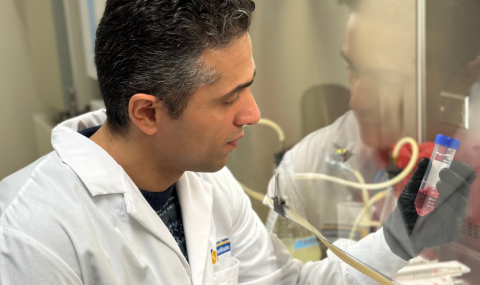What is Biliary Atresia?
Biliary Atresia is a condition that is present from birth and refers to the blockage or inflammation of the tubes (also known as bile ducts) that transport bile from the liver to the gut to help with the digestion of ingested fat. Due to this obstructed bile flow, the liver may become damaged or scarred since bile is meant to leave the liver.
This condition is rare and occurs in approximately 1 in 19 000 live births in Canada, with slightly more cases recorded in females, as well as Asian and Black infants.
What causes Biliary Atresia?
Experts do not fully understand the exact cause of Biliary Atresia yet. It does not seem to run in families, but certain factors are suspected to play a role in the development of Biliary Atresia in the womb or shortly after birth. This includes exposure to viral infections, chemical exposure, issues with the immune system and genetic mutations that are not passed down from the parents.
What are the symptoms of Biliary Atresia?
- Pale yellow, grey or white stools
- Jaundice (the yellowing of the skin and whites of the eyes)
- Dark, tea-coloured urine
- Abdominal swelling
- Enlarged liver
- Failure to thrive
Did you know?
The Newborn Screening Ontario (NSO) program screens infants for congenital conditions like Biliary Atresia, emphasizing early detection to improve outcomes. Parents are provided with an Infant Stool Colour Card (ISCC) to help check and document the color of their baby's poop, aiding in the early identification of potential issues.
How is Biliary Atresia diagnosed?
Figuring out if an infant has Biliary Atresia is time sensitive since the earlier the detection,
the better the outcome. Therefore, there are many different investigations that are often performed in a short time frame to determine whether someone has biliary atresia or not.
Potential diagnostic measures:
- Observation of symptoms
- Urine sample
- Blood sample
- Ultrasound
- Cholangiogram (imaging of the bile ducts)
- Hepatobiliary Iminodiacetic Acid Scan (HIDA)
- Liver biopsy
Patients may need to be admitted to the hospital to undergo the necessary diagnostic measures listed above. This process often involves collaboration among various departments, including hepatology, surgery, nursing, social work and dietetics to ensure comprehensive care.
How is Biliary Atresia treated?
Kasai procedure
A surgery known as the Kasai procedure, or hepatoportoenterostomy, is conducted to help bile flow from the baby’s liver to the small intestine, relieving the blockage and allowing normal bile flow and nutrient absorption. In this procedure, the surgeon removes the damaged bile ducts and connects the liver directly to a segment of the intestine.
Liver transplant and management
Eventually, due to accumulated liver damage over time, a liver transplant may be necessary during the patient’s childhood or teenage years (more than 50% of cases). This has become the standard of care, with the likelihood of survival following the transplant being considered excellent.
Treatment may also include taking various medications to support liver function and manage potential complications.
Thankfully, advances in treatment have allowed more than 80-90% of infants with Biliary Atresia to survive to adulthood.
What happens next?
- Early detection of biliary atresia is crucial for better outcomes.
- The Kasai procedure is most effective within the first 90 days of life, especially within the initial 8 weeks.
- If jaundice or pale stools persist beyond the first 2 weeks of life, prompt medical attention is necessary for a fractionated bilirubin to be measured.
- Long-term liver damage often requires consistent medical care throughout childhood, with many patients eventually needing a liver transplant.
- Regardless of treatment (Kasai procedure or liver transplant), your child will require ongoing care to monitor liver health, growth/nutrition and manage any complications that may occur.
- This can understandably be stressful; However, most infants undergoing transplants lead long and healthy lives.
Can Biliary Atresia be prevented?
Since the cause of Biliary Atresia is unknown, there are currently no established methods for preventing the condition. It’s important to clarify that while genetic mutations may contribute to its development, these mutations are not inherited from either parent.



